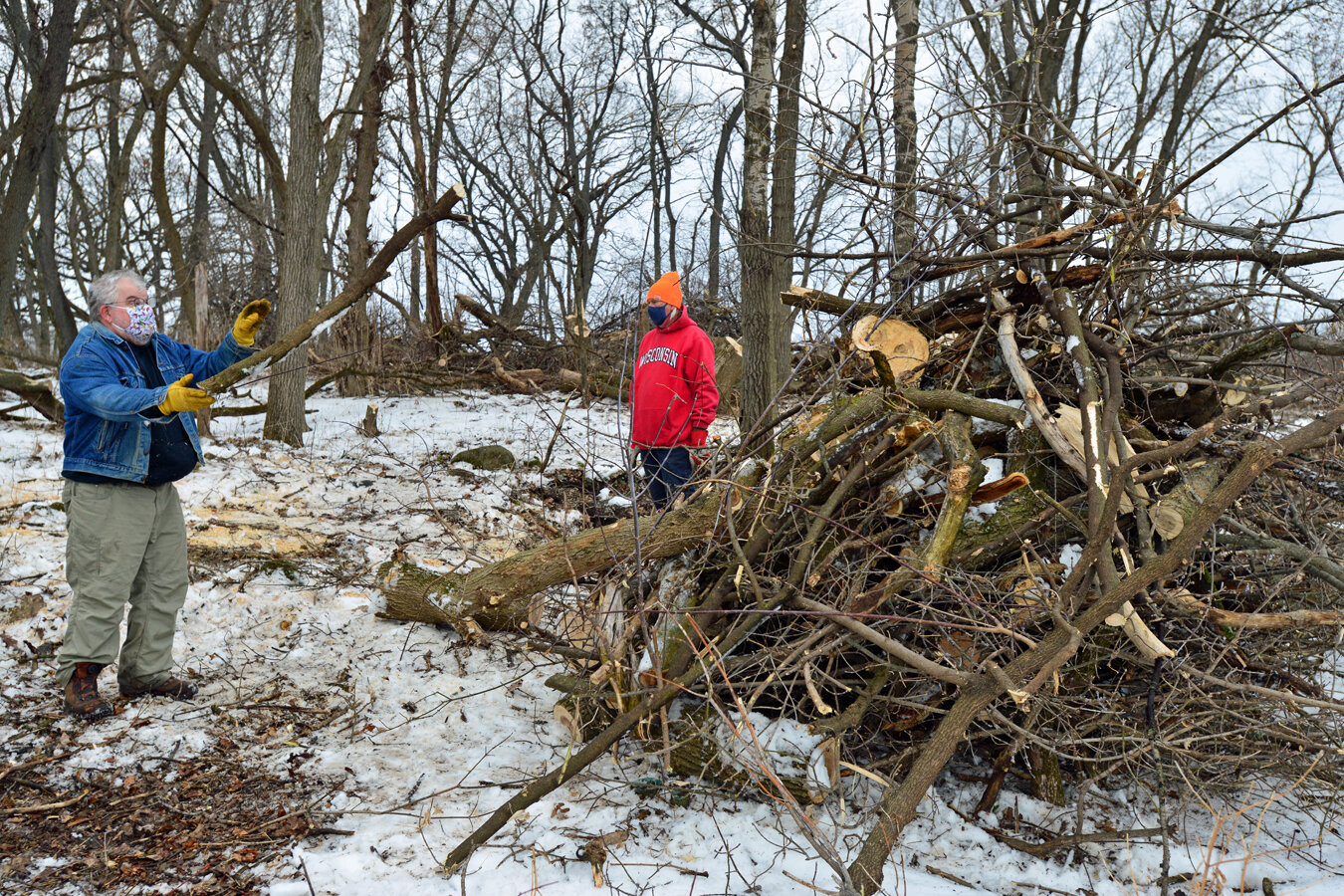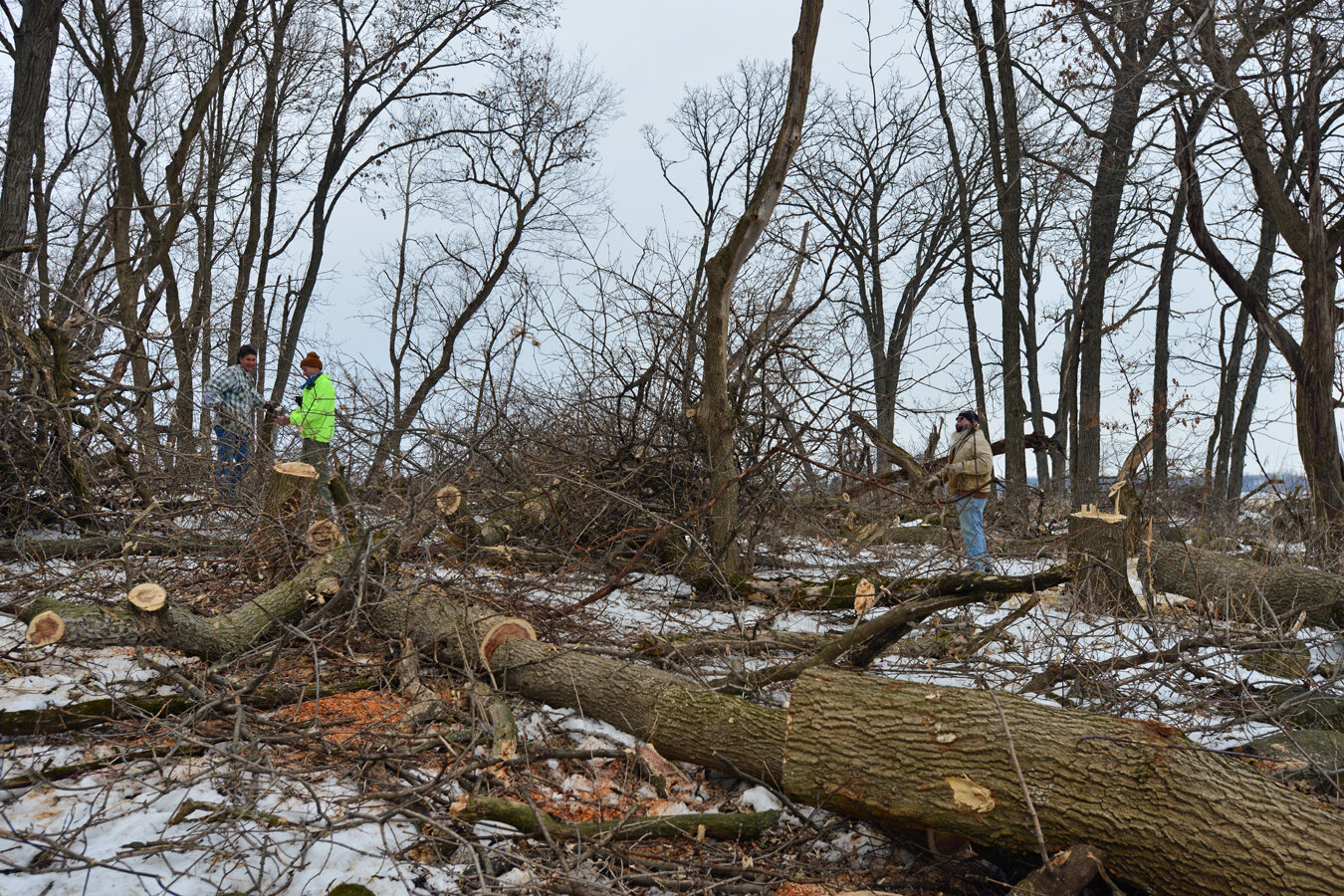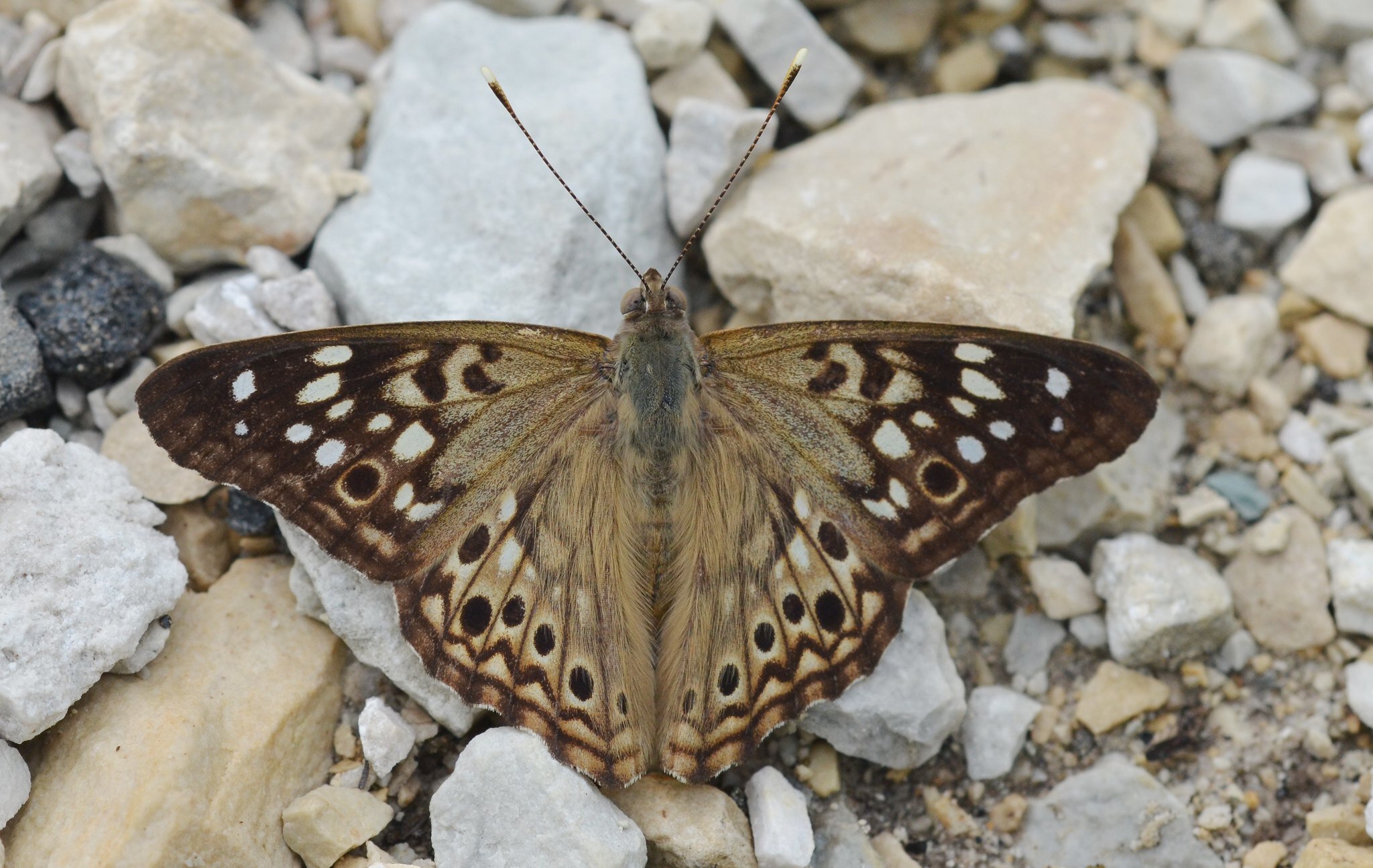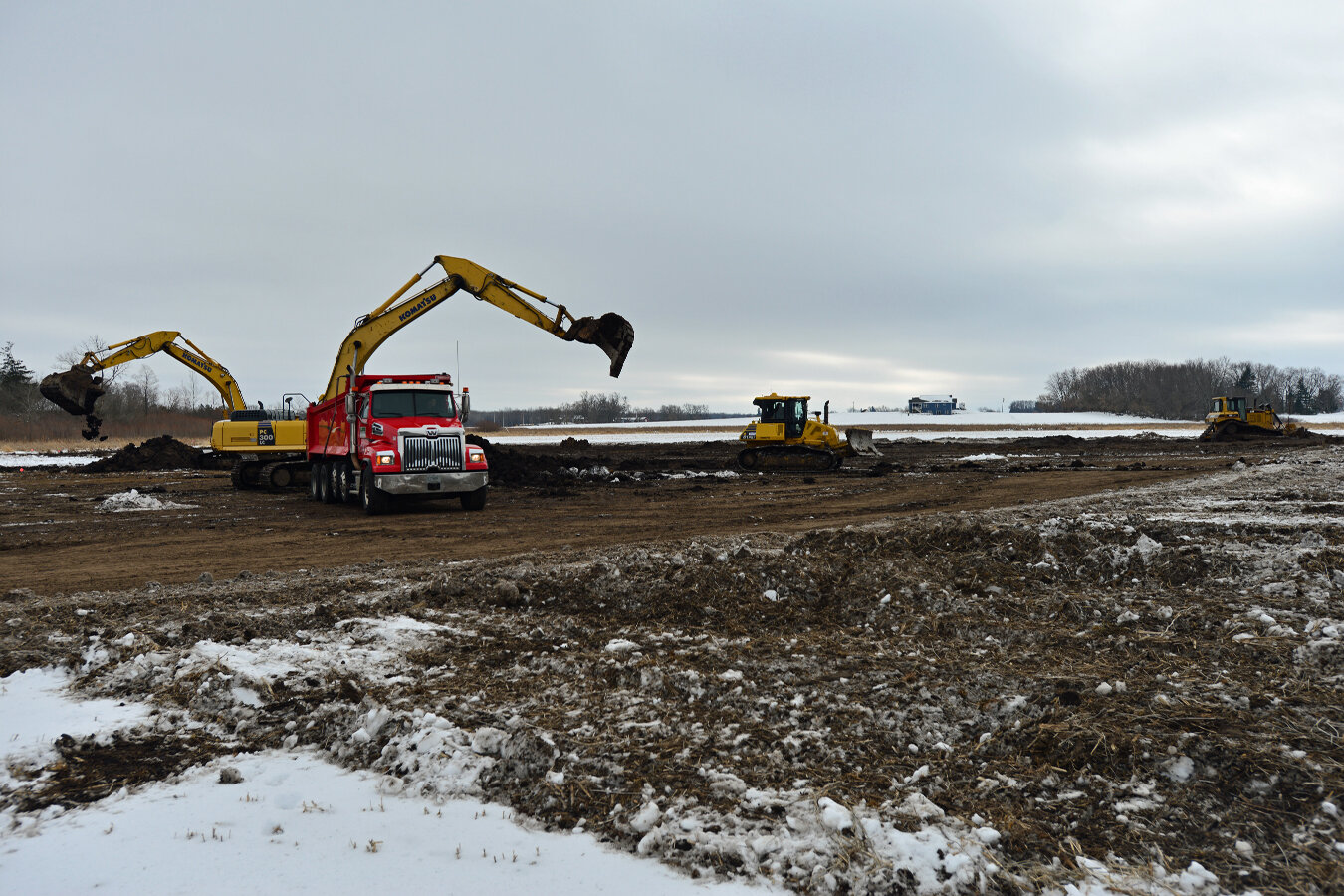I was thinking I should blog about "Lobbying for Stewardship" or "Listening to Science: How and When" or "A Nation Divided." Just then the word came forth from Goose Pond: Help was needed at Otsego Marsh. Being outside with good folks doing good work was a much better idea than wrestling with the computer in the basement bunker.
So on Wednesday afternoon, I found myself with a dozen other volunteers, properly masked and distanced, at Otsego Marsh facing the top of the new property. About 5 or 6 acres are covered with trees. Of those acres, the bottom half has the remains of an oak savanna; a pine plantation, mostly red pine, covers the upper half. Our mission was to continue our just-started revitalization of the oaks.
That’s me on the left, chucking a branch onto the burn pile. Photo by Mark Martin / Madison Audubon
Some magnificent oaks still remain along with a few nice cherry, hickory, and hackberry. Doing its best to choke out everything is our old acquaintance, the box elder. Our task was to cut, haul, and treat the box elder. With several experienced and safe sawyers and 10 or so hard working haulers, we made some satisfying progress.
Kaylee Nelson helps with the brush removal. Photo by Mark Martin / Madison Audubon
We made some serious progress during this work day! Photo by Mark Martin / Madison Audubon
With the box elders gone, we will see better oak regeneration and a more diverse, native ground cover. Even the mature bur oaks will benefit from the removal of the box elder. That better vegetation and more open foraging opportunities should benefit a variety of wildlife including many birders' favorite redhead.
That favorite is the redheaded woodpecker and leads us to the top of the hill and the pines. The plantation is so thick that asking volunteers and staff to eliminate them would be very hard, take very long, and I'm not sure how safe. The quality, quantity, and location of the trees make commercial removal or thinning unlikely. A saving grace is that the pines are good nesting trees for the woodpeckers although the density of trees is not good. What to do? The Goose Pond staff are weighing girdling some of the trees — or stripping off a ring of bark around a tree, which cuts off water and nutrient flow. The tree dies in several years and continues to stand for several more. During that time the woodpeckers find them attractive nesting sites and food sources.
We hope to see many red-headed woodpeckers zooming through the restored woodland at Otsego Marsh. Photo by Arlene Koziol
The second redhead of Otsego Marsh lives in the conifers, the red squirrel (also known as the pine squirrel). Folks in that area believe the red squirrel is not native to that area but was introduced years ago to the DNR's MacKenzie Nature Center. Some have spread to stands of conifer in nearby parts of Columbia County. I haven't researched that but they are a handsome little critter. I hope the day is coming soon that we'll have both our redheads at Otsego Marsh.
Red squirrel. Photo by Arlene Koziol
We hope that in amongst the woodlot’s hackberries, we will find a species whose life wholly and utterly depends on the hackberry tree, the Hackberry Emperor butterfly. As butterflies go, this is a plain one but when the goal is to blend with the bark of a hackberry tree, vibrant colors are less than wise. Finding a species with such circumscribed living requirements should be interesting.
Hackberry emperor butterfly. Photo by Andy Reago & Chrissy McClarren
We ended the day with a look at and discussion of the wetland scrapes that are under construction on the lower end of the new property. We'll have three scrapes designed to offer great breeding habitat for puddle ducks and shorebirds. They'll be happy homes for frogs and scores of invertebrates. With all the heavy equipment assembled, digging the scrapes seemed pretty straightforward. Listening to Graham Steinhauer and Mark Martin (part of the Goose Pond team in charge of the restoration at Otsego Marsh) describe design and regulatory processes reminded us of how much work occurs before the dirt is moved.
Machinery working to create wetland scrapes at Otsego Marsh. Photo by Mark Martin / Madison Audubon
The work, the people, the prospect of woodpeckers, butterflies, ducks, and frogs made for a happy day. Realizing that all this restoration was occurring within six months of Madison Audubon’s purchase of the land put an even bigger smile on this face.
During a week when it seemed we were way too close to hell in a handbasket, being out on some land with caring people working for wildlife was a respite. I'm thankful for the Madison Audubon staff and board who made this possible. And even more for the many Madison Audubon members and friends who donated to the Otsego Marsh purchase. Please get out and enjoy what you've helped to create.
Written by Topf Wells, Madison Audubon board member and advocacy committee chair
Cover photo by Mark Martin / Madison Audubon












